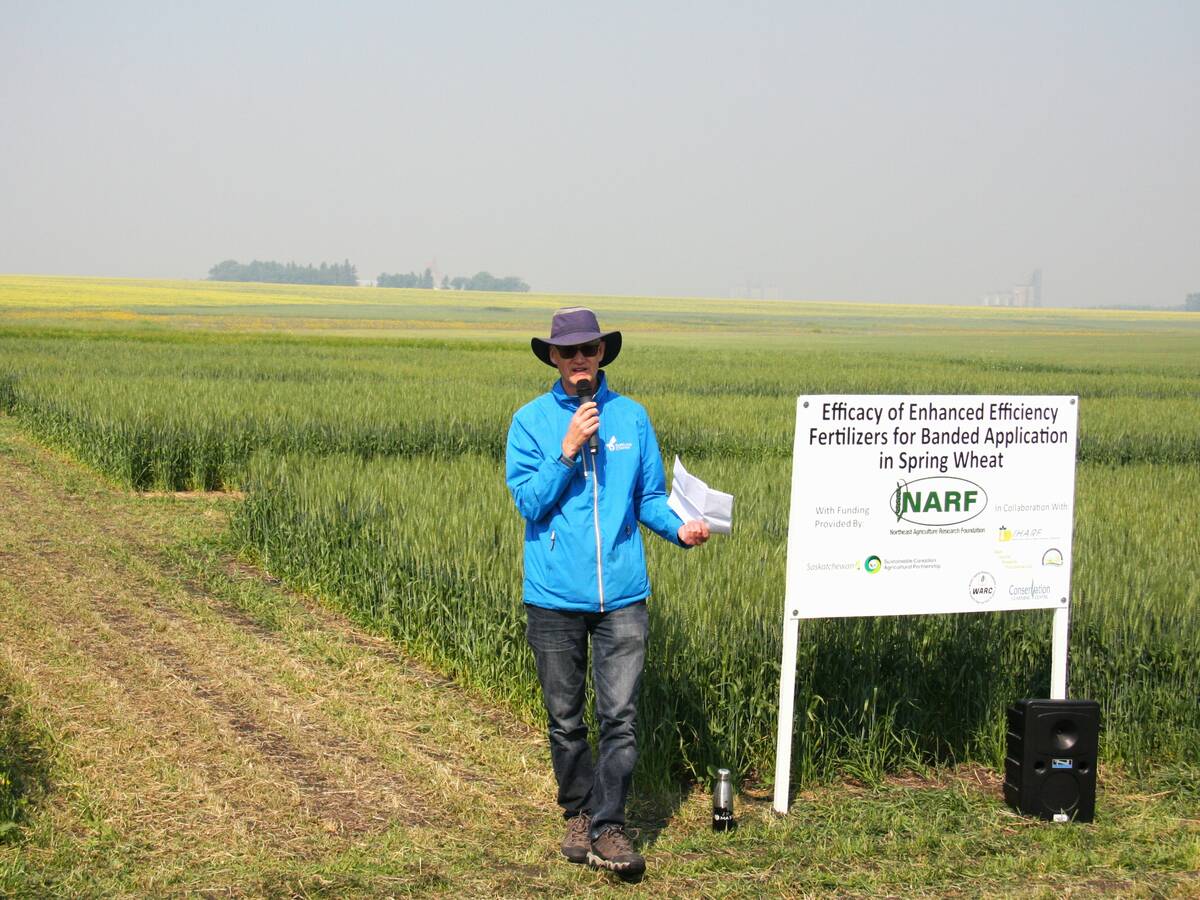Similar to species that aren’t harmful | Bite marks on leaves when it isn’t grasshopper season are tell-tale signs
The truth is, most people would just as soon not become overly familiar with worms.
However, familiarity and accurate identification are crucial to making decisions if the worms in the field are suspected to be affecting crops.
Plant and soil sciences instructor Jeremy Hummel gave farmers at a June 25-27 field school in Lethbridge a course in worm identification, noting cutworms look similar to other species that are not harmful to crops.
White grubs, which feed on decomposing organic matter, look similar to cutworms, he said. When touched, both species curl into a C shape, but grubs can’t make a complete circle, while cutworms curl into a spiral shape.
Read Also

Fertilizer method’s link to emissions studied
A researcher says others studying greenhouse gas emissions aren’t considering how the loss of nitrogen into the atmosphere correlates with fertilizer application or if there is an impact to yield.
Both types have legs and a hardened head and can reach a similar size, although grubs won’t get as big as cutworms, Hummel said.
Look initially for curled leaves when determining cutworm damage. When leaves open, look for bite marks similar to grasshopper damage.
Cutworms can be tapped as the culprits if bite marks are found because they do their damage before grasshopper season.
In pea crops, farmers will notice wilted plants and notches in stems. The peas will recover if nipped above the scale leaf node.
“With peas we have a huge re-growth ability,” said Hummel.
Economic thresholds for spraying cutworms depend on crop type, stage and level of damage.
Different kinds of cutworms do different kinds of damage, adding to identification and damage assessment challenges.
For example, bertha armyworms feed above ground, while glass cutworms feed below.
“You can see there’s all these complicating factors,” said Hummel.
The good news is that cutworms have parasites, in the form of wasps, but that means accurate information is needed before spraying insecticides that will harm both cutworms and beneficial insects.
“We really need to be ground truthing,” Hummel said, noting cutworm problems are generally cyclical, in part because of parasitic action.
“The more we can use these parasites, the better it is.”
Hummel advocates judicious use of insecticides and support for cutworm research, which includes contacting him so he can collect worm samples and further his investigations.
“It’s not embarrassing to have cutworms,” he said. “The embarrassing thing is to spray if you don’t need to.”

















